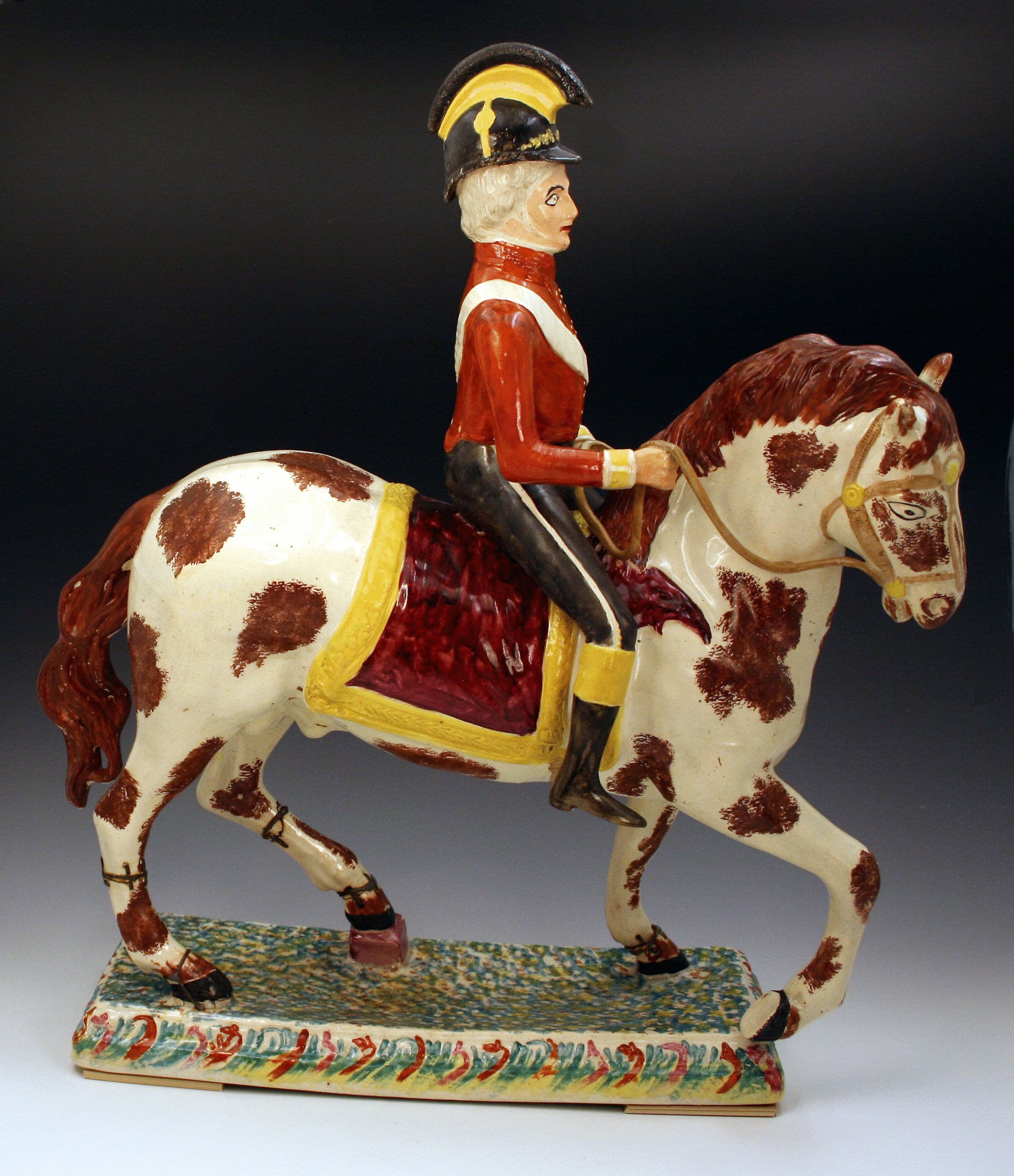Description
Large size pearlware Staffordshire pottery model of Wellington on Horseback.
EXHIBITION “IF THESE POTS COULD TALK”.
This figure is probably the largest ever produced of Wellington on horseback.
Wellington is one of the most famous and succesful of the British military Generals.
Wellington led many campaigns, but his most important success was at Waterloo where he defeated the French. His horse Copenhagen was named after another battle where he was victorious.
This figure is quite naively made, if you look carefully you can see a small oblong block for the horses foot to rest. This was required due to firing problems in the kiln, you can also see that the base is slightly out of form, and the figure does have a “lean” which gives the effect of movement. I am sure that this was by accident rather than design. I like to see these imperfections in period figures from the British potters. Another feature which I like are the tinker “make do” repairs on the horses legs.
These are all details which add to the historical significance of the figure.
Wellington was quite an aloof man and I do not think he would have been impressed with the rather shocked and rather comical look given to him by the potters. This combination of a serious attempt at grandeur counterbalanced by the naive quality of the figure….wonderful.


